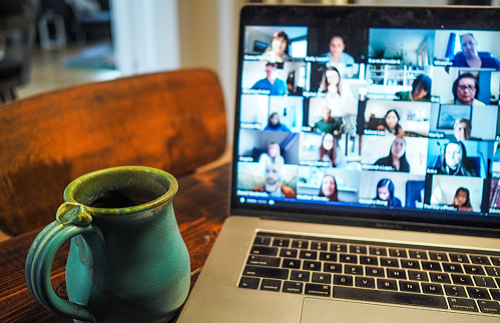Using TED Talks to Build Equity in the Office
By Megan Hoyt (‘12), Assistant Director of Alumni Personal and Career Development at Wake Forest University, Winston-Salem, NC
Our employees and our workplaces are struggling right now. We are all managing heightened emotions associated with uncertainty and feeling the looming sense of prolonged isolation or chaos. At the same time, many of our colleagues of color are navigating offices bursting with increased concern over diversity and inclusion. When I sit with these challenges, I think about the need for meaningful conversation. It feels important right now to build spaces that allow people to share their authentic selves with their colleagues.
Over the last year, I created a discussion space that centered conversation with my colleagues, and I invite you to do the same in your workplace. We affectionately called the series “TEDxUA”, named for our department. The model is simple: choose a thought-provoking TED talk, set a date and time, and make it easy for folx to join. You can think of it as a book club-lite because there is no preparation needed beforehand and anyone can join the gatherings which are most interesting to them.
The concept for these sessions came from a Gallup article on How to Bring Out the Best in Your People and Company that offered the idea that “our best selves emerge when we have experiences that connect us and create a sense of belonging”. Together with my colleagues, we created a shared experience and learned more about each other’s perspectives and backgrounds. We’ve explored topics of happiness at work, the power of introverts, favorite childhood books, imposter syndrome, and vulnerability. As we created a culture of trust, it became important for our group to explore conversations around diversity, bias, inclusion, and privilege.
If you are interested in using this model in your workplace, here are three videos that will generate compassionate, insightful conversations around issues of diversity, inclusion, and equity that will connect your colleagues in powerful ways:
Pixar’s New Short Film Examines Workplace Diversity with Humor, Insight, and a Lively Ball of Yarn
The eight-minute animated short is a look at workplace diversity and inclusion. The many themes center on belonging, status quo, and culture. To begin the discussion, you might ask, “While this culture appears as an extreme example, how does it compare to our workplace? What similarities have you felt personally, or noticed of our colleagues?”
To move your workplace and colleagues into action, you might invite everyone to take a moment at the end of the discussion to create an Action Planning Statement by answering the question: What is one specific thing I will do to use my power or privilege to create a more inclusive work environment within our office?
Chimamanda Ngozi Adichie: The danger of a single story | TED Talk
Our lives, our cultures, are composed of many overlapping stories. Novelist Chimamanda Adichie tells the story of how she found her authentic cultural voice — and warns that if we hear only a single story about another person or country, we risk a critical misunderstanding.
For an opening question, you might ask: think about a time when you’ve traveled to somewhere new. What is your favorite travel story to tell? After everyone has viewed the video, you might kick off the discussion by asking: what single stories did this make you recognize or remember that you have? If people had a single story of you, what would they not know?
Verna Myers: How to overcome our biases? Walk boldly toward them
Our biases can be dangerous, even deadly — as we’ve seen in the cases of Michael Brown in Ferguson, Missouri, and Eric Garner, in Staten Island, New York. Diversity advocate Vernā Myers looks closely at some of the subconscious attitudes we hold toward out-groups. She makes a plea to all people: Acknowledge your biases. Then move toward, not away from, the groups that make you uncomfortable. In a funny, impassioned, important talk, she shows us how.
If you wanted to incorporate an activity into the discussion, I’d recommend inviting everyone to complete the Social Identity Wheel worksheet. This tool helps individuals consider their identities critically and how identities are more or less keenly felt in different social contexts.
Regardless of the videos you choose, I encourage you to find ways to start important conversations in your workplace. Here’s a template for a conversation guide that might be helpful in organizing the dialogue. The key to remember is this: just make the space to gather your colleagues for conversation. You’ll be glad you did.

